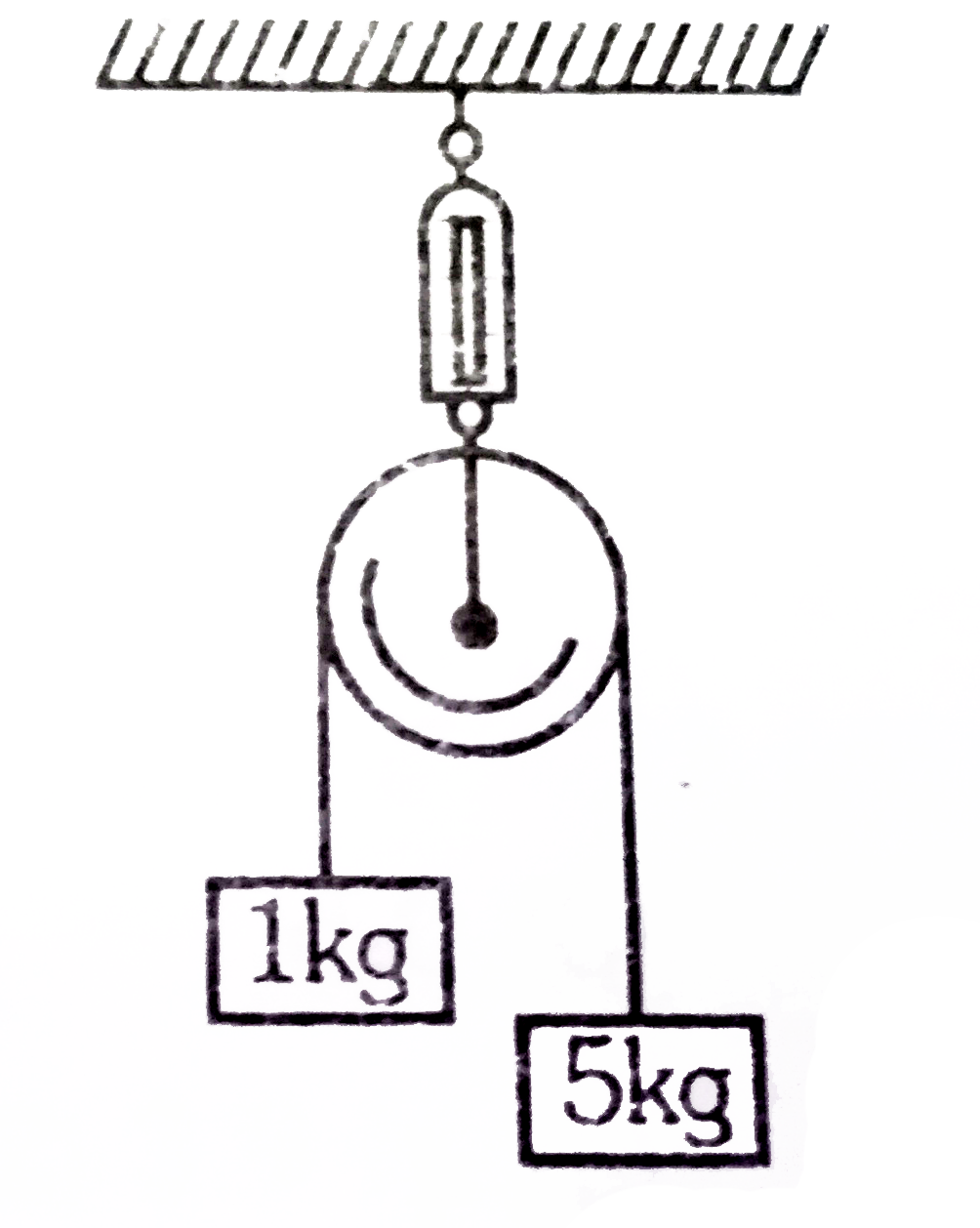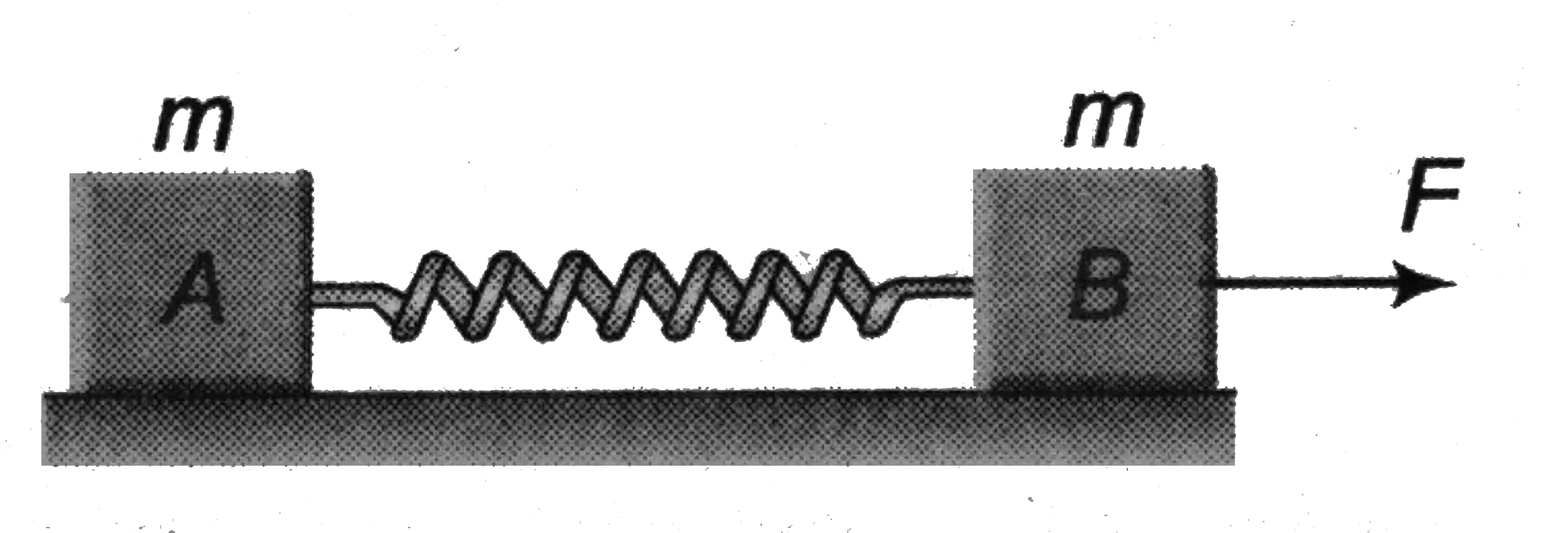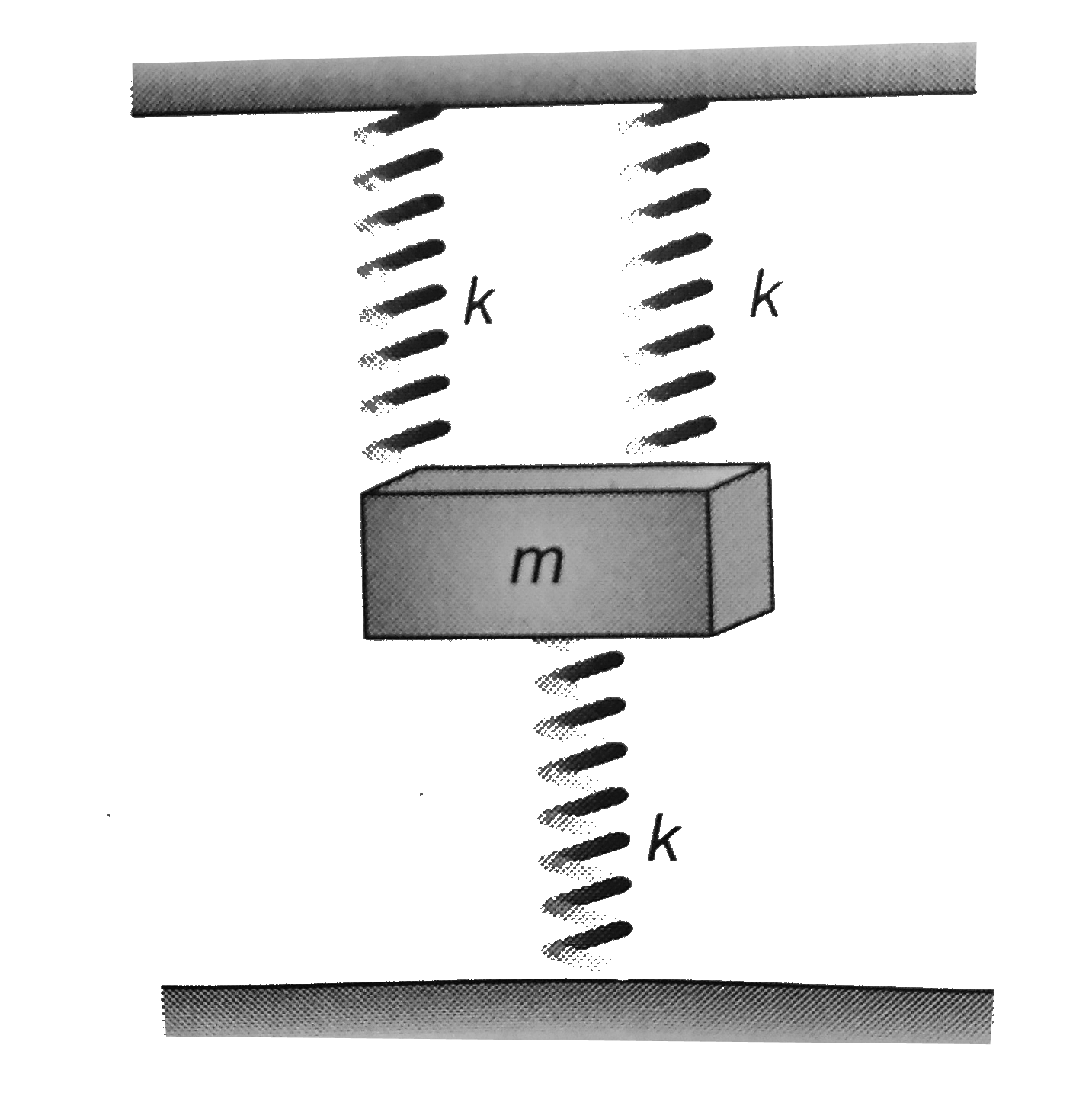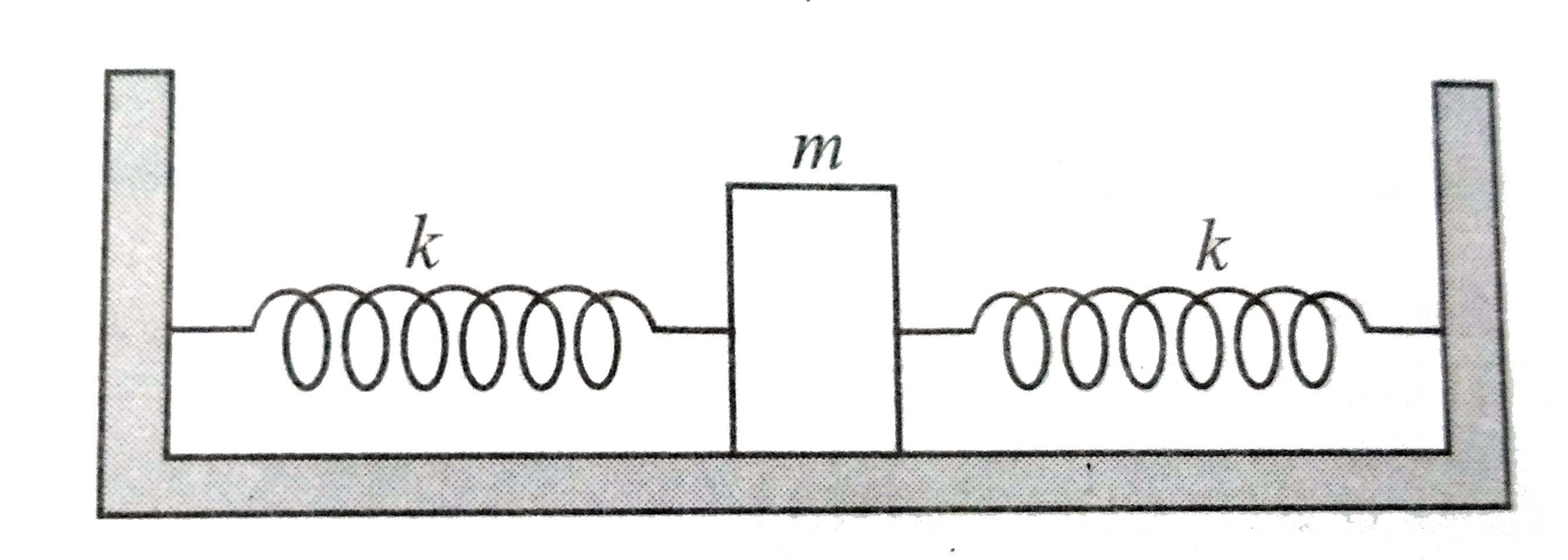Two identical balls AandB each of mass 0.1kg are attached to two identical mass less is springs. The spring-mass system is constrained to move inside a right smooth pipe bent in the form of a circle as shown in figure . The pipe is fixed in a horizontal plane. The center of the balls can move in a circle of radius 0.06m. Each spring has a natural length of 0.06πm and force constant 0.1N/m. Initially, both the balls are displaced by an angle θ=π/6 radians with respect to diameter PQ of the circle and released from rest.
a. Calculate the frequency of oscillation of the ball B.

The correct Answer is:(i)f=12π√4×010.1=1πHz,(ii)V=0.0628
(iii)3.9×10−4J
Given - Mass of each block A and B,m=0.1kg
Radius of circle, R=0.06m
Natural legth of spring l0=πR=0.06π (Half circle) and spring constant, k=0.1N/m
In the stretched position elongation in each spring
x=Rθ,
Let us draw FBD of A

Spring in lower side is stretched by 2x and on upper side compressed by 2x. Therefore, each spring will exert a force 2kx on each ball.
Hence, a restoring force, F=4kx Will act on A in the direction shown in figure.
Restoring torq1ue of this force about again
τ=−F,R=−(4kx)R=−(4kRθ)R
or τ=−4kR2.θ.....(1)
Since, τ∝−θ, each ball executes angular SHM about origin O.
Eq. (1) can be rewritten as
lα=−4kR2θ
or (mR2)α=−4kR2θ
or α=−(4km)θ
∴ Frequency of oscillation, f=12π√∣∣∣accelerationdisplacement∣∣∣=12π√∣∣∣αθ∣∣∣
f=12π√4×0.10.1=1πHz.
Alternate :
f=12π√k'μ
where k'=2k,μ=m1m2m1+m2=m2
f=12π√4km=12π√4×0.10.1=1πHz
(ii) In stretched position, potential energy of the system is
PE=2{12k}{2x}2=4kx2,(x=Rπ6)
and in mean position, both the blocks have kinetic energy only. Hence,
KE=2{12mv2max
From energy conservation
PE=KE
∴4kx2=mv2max
∴vmax=2x√km=2Rθ√km
Substituting the values
vmax=2(0.06)(π/6)√0.10.1=0.02π1
or vmax=0.0628m/s
(iii) Total energy of the system, E=PE in stretched position
or =KE at mean position
E=2(12mv2max)=(0.1)(0.0628)2J or E=3.9×10−4J
Topper's Solved these Questions
- SIMPLE HARMONIC MOTION Book:RESONANCE ENGLISHChapter:SIMPLE HARMONIC MOTION Exercise:Exercise- 3, PART - II
Explore 17 Videos
- SEMICONDUCTORSBook:RESONANCE ENGLISHChapter:SEMICONDUCTORSExercise:Exercise 3
Explore 88 Videos
- TEST PAPERSBook:RESONANCE ENGLISHChapter:TEST PAPERSExercise:PHYSICS
Explore 784 Videos
Similar Questions
Two identical balls AandB eavh of mass 0.1kg are attached to two identical mass less is springs. The spring-mass system is consetrained to move inside a right smooth pipe bent in the form of a circle as shown in figure . The pipe is fixed in a horigental plane. The center of the balls can move in a circle of radius 0.06m. Each spring has a natural length of 0.06πm and force constant 0.1N/m. Initially, both the balls are displaced bu an angle θ=π/6 dadius withrespect to diameter PQ of the circle and released from rest.
a. Calculate the frequency of oscillation of the ball B.
b. What is the total energy of the system ?
c. Find the speed of the bal A when A and B are at the two ends of the diameter PQ.

View SolutionTwo identical blocks each of mass 1kg are joined together with a compressed spring. When the system is released the two blocks appear to be moving with unequal speeds in the opposite directions as shown in fig.

Choose the correct statement -
View SolutionTwo masses of 1 kg and 5 kg are attached to the ends of a massless string passing over a pulley of negligible weight. The pulley itselt is attached to a light spring balance as shown in figure. The masses start moving during this interval, the readcing of spring balance will be-

View SolutionTwo masses of 1 kg and 5 kg are attached to the ends of a massless string passing over a pulley of negligible weight. The pulley itselt is attached to a light spring balance as shown in figure. The masses start moving during this interval, the readcing of spring balance will be-

View Solution"A mass is attached to one end of a spring and by holding the other end in hand, the spring is whirled in a horizontal circle" What happens to the length of the spring ?
View SolutionTwo identical blocks A and B of mass m joined together with a massless spring as shown in figure are placed on a smooth surface. If the block A moves with an acceleration a0, then the acceleration of the block B is

View SolutionIn the figure all spring are identical having spring constant k and mass m each The block also mass m The frequency of oscillation of the block is

View SolutionTwo masses m and 2m are attached to two ends of an ideal spring as shown in figure. When the spring is in the compressed state, the energy of the spring is 60 J, if the spring is released, then at its natural length

View SolutionTwo identical springs of spring constant k are attached to a block of mass m and to fixed supports as shown in the figure. The time period of oscillation is

View SolutionTwo springs are in a series combination and are attached to a block of mass 'm' which is in equilibrium. The spring constants and extension in the springs are as shown in the figure. Then the force exerted by the spring on the block is :

View Solution